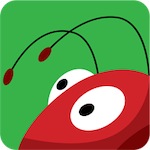During the last term of the school year, I ran five sessions on how to program the micro:bit at Yatton and Mary Elton primary schools.
The micro:bit is an electronic device created by the BBC to encourage children to code. The BBC distributed micro:bits to secondary schools in 2016; since then the micro:bit has grown in popularity and it is now available for anyone to purchase for their own use (for less than £20).
I got my hands on a micro:bit as soon as it was available with a view to introducing it to primary school children. I then bought a further 10 micro:bits – enough for twenty children to work in pairs. The devices have been fantastic and the children have loved programming them.
We used the JavaScript blocks editor, as the children are already familiar with the Scratch block programming language. Once the children understood how the micro:bit worked and how the code is downloaded and transferred to the micro:bit… the fun really started.
The children were challenged to display letters, numbers, play games, build a compass, check the temperature and listen to music notes. I was pleased to see the children’s enthusiasm; it was like ‘a pet’ that obeyed their orders and commands. It made them laugh and they loved going around the room sharing with their friends.
The micro:bit is not just for secondary school children. As more children become more confident with coding, they are ready to be challenged, and the micro:bit is the perfect device for this. It is easy to set up and get started.
I look forward to running more micro:bit sessions in the next academic year and continue to challenge the children.



